Comments / Questions (90)
![]() Lowesa wrote:
Lowesa wrote:
Bonjour, pour la partie raglan, les augmentations se font donc tous les 2 rangs ? Un rang sur deux ? Je vous remercie.
06.10.2021 - 09:29DROPS Design answered:
Bonjour Mame Lowesa, oui, les augmentations dans la partie raglan se font tous les 2 tours. Bon tricot!
06.10.2021 - 11:25
![]() Jytte Bering wrote:
Jytte Bering wrote:
Tak for svaret. Til andre der står med samme problem: HVER GANG der skal strikkes A2 efter første rapport i højden (8 pinde) skal du strikke YDERLIGERE 2 gange A2. Gælder kun mens der tages ud.
23.09.2021 - 23:08
![]() Jytte Bering wrote:
Jytte Bering wrote:
Jeg er kommet videre med spørgsmålet fra august måned. Men vil rigtig gerne have svar på mit spørgsmål fra 18.9. Kan se at Rikke har spurgt om noget af det samme 12.8. - men kan ikke se noget svar…. Jeg savner dog svar på mere end det hun har spurgt om.
21.09.2021 - 19:17DROPS Design answered:
Hej igen Jytte, fint at du er kommet videre med dit strikketøj :) Nu har du også fået svar fra 18/9. God fornøjelse!
22.09.2021 - 16:07
![]() Jytte Bering wrote:
Jytte Bering wrote:
Er stadig ikke kontaktet. Skrev her 26.8. …. Dårligt synes jeg. Hvordan kommer jeg videre efter 1. omgang mønster/8 pinde mønster? Der er jo nu 48 m mere så kan jo ikke blot strikke pind 1 i mønsteret igen (de 2 ekstra A2 er kun 12 mere) OG hvor skal de 2 ekstra A2 strikkes?? Der hvor der er 2xA2 eller???? Der er jo IKKE videoklip der kan bruges ril en hel masse ift opskriften ….
18.09.2021 - 19:51DROPS Design answered:
Hej Jytte, jo når du starter forfra i diagrammet, starter du med 4 masker i A.1, nu strikker du så de 6 masker i A.2 og gentager til du har 3 masker tilbage som du strikker i A.3. Du vil da automatisk strikke de 12 ekstra masker ind i A.2. God fornøjelse!
22.09.2021 - 16:05
![]() Alice wrote:
Alice wrote:
Bonjour, Serait il possible d'avoir vos explications Fabienne Borel? merci!
17.09.2021 - 11:32
![]() Jytte Petersen wrote:
Jytte Petersen wrote:
Er kommet til 2.gang i højden sidste omgang - sidste pind hvor man tager ud i A3 er der tre omslag og så skal man slå om pinden i mønster 2 som det sidste Man kan da ikke slå om pinden 2 gange - der er jo ingen maske imellem HVAD gør jeg ??? MAN skal gætte sig til meget i det hele tage DER står desuden ikke noget om , hvornår mønster "2 skal puttes ind , men håber det er som det første når man begynder på 2. sektion MVH Jytte
02.09.2021 - 16:29
![]() Jytte Bering wrote:
Jytte Bering wrote:
Ved pind 3 på bærestykket har jeg 2 m tilbage men mangler A2 A3 og en maske glat…. Ville kræve 20 masker at lave det jeg mangler…. Hvor er fejlen?? Har talt og talt og talt igen.
26.08.2021 - 22:07DROPS Design answered:
Hej Jytte, Hvilken størrelse strikker du, og hvor mange masker har du? Er du på første pind i diagrammet? Har du taget 8 nye masker ud ifølge diagram A.1 og A.3?
21.09.2021 - 11:41
![]() Sara Marie wrote:
Sara Marie wrote:
Jeg kan ikke få maskeantallet til at passe. Jeg strikker en str s, har slået 72 masker op, strikket rib og er lige kommet til bærestykket. Når jeg strikker hele første omgang af bærestykket får jeg det kun til 71 masker. Jeg har altså en maske til sidst, som jeg ikke ved, hvad jeg skal gøre med. Jeg har efterfølgende regnet efter, og her får jeg også kun jeres opskrift på første omg til i alt 71 masker. Hvordan kommer jeg videre herfra? Håber, I kan hjælpe. Mvh Sara Marie
26.08.2021 - 17:26
![]() Dagny Nielsen wrote:
Dagny Nielsen wrote:
Hej jeg sidder med garn og opskrift fra drops .på bluse drops220-3 men har opgivet ,at få diagramet til og passe vil rigtig gerne ha hjælp Hilsen Dagny
25.08.2021 - 16:51DROPS Design answered:
Hei Dagny. For at vi skal hjelpe deg, er det fint at du beskriver hva det er du trenger hjelp til, hvor går det galt for deg/hvor du mener det ikke stemmer. Og husk å skrive hvilken str. du strikker. mvh DROPS design
27.08.2021 - 11:22
![]() Rikke wrote:
Rikke wrote:
Jeg strikker str xl og er kommet til der hvor man skal øge med 2 stk A2. Jeg har strikket mønsteret i en højde. Jeg synes ikke man kan læse hvor man skal sætte øg ingen ind henne
25.08.2021 - 15:07
Galatea#galateasweater |
|||||||||||||||||||
 |
 |
||||||||||||||||||
Knitted sweater in 1 strand DROPS Kid-Silk and 1 strand DROPS BabyAlpaca Silk. The piece is worked top down with raglan and lace pattern. Sizes S - XXXL.
DROPS 220-3 |
|||||||||||||||||||
|
------------------------------------------------------- EXPLANATIONS FOR THE PATTERN: ------------------------------------------------------- PATTERN: See diagrams A.1 to A.3 DECREASE TIP-1 (for sleeves): Decrease 1 stitch on either side of the marker thread as follows: Work until there are 3 stitches left before the marker-stitch, knit 2 together, knit 3 (marker thread sits in the middle of these stitches), slip 1 stitch as if to knit, knit 1 and pass the slipped stitch over the knitted stitch (2 stitches decreased). DECREASE TIP-2 (evenly spaced): To work out how to decrease evenly, count the total number of stitches on the needle (e.g. 50 stitches) and divide by the number of decreases to be made (e.g. 8) = 6.25. In this example knit approx. each 5th and 6th stitch together. BINDING-OFF TIP: To avoid the bind-off edge being tight you can bind off with a larger size needle. If the edge is still tight, make 1 yarn over after approx. each 4th stitch at the same time as binding off; the yarn overs are bind off as normal stitches. ------------------------------------------------------- START THE PIECE HERE: ------------------------------------------------------- SWEATER – SHORT OVERVIEW OF THE PIECE: The neck and yoke are worked in the round with circular needle, top down. The round starts between the left sleeve and the back piece. The yoke is divided for body and sleeves and the body continued in the round with circular needle. The sleeves are worked in the round with short circular needle/double pointed needles, top down. The piece is worked with 1 strand Baby Alpaca Silk and 1 strand Kid-Silk (= 2 strands). NECK: Cast on 72-72-84-84-96-96 stitches with circular needle size 4 MM = US 6 and 1 strand Kid-Silk and 1 strand Baby Alpaca Silk (= 2 strands). Knit 1 round. Then work rib (knit 1, purl 1) for 4 cm = 1½". Insert 1 marker at the beginning of the round. The yoke is measured from this marker. Change to circular needle size 5 MM = US 8. REMEMBER THE KNITTING GAUGE! YOKE: Continue as follows: Work 1 stitch in stockinette stitch, work A.1 (= 4 stitches), A.2 over the next 12-12-18-18-24-24 stitches (= 2-2-3-3-4-4 repeats of 6 stitches), A.3 (= 3 stitches), 2 stitches in stockinette stitch, A.1, A.2, A.3, 2 stitches in stockinette stitch, A.1, A.2 over the next 12-12-18-18-24-24 stitches (= 2-2-3-3-4-4 repeats of 6 stitches), A.3, 2 stitches in stockinette stitch, A.1, A.2, A.3, 1 stitch in stockinette stitch. Continue this pattern; all increases are drawn in A.1 and A.3. You increase 8 and 16 stitches alternately, every 2nd round. Each time A.1 and A.3 are completed in height, there will be 2 more repeats of A.2 in width. Increase every 2nd round a total of 18-20-20-22-24-26 times = 288-312-324-348-384-408 stitches. The piece measures approx. 16-18-19-20-21-24 cm = 6¼"-7"-7½"-8"-8¼"-9½". Continue the pattern but without further increases; stitches which do not fit into the pattern in the sides are worked in stockinette stitch. Continue working until the piece measures 21-23-26-28-32-35 cm = 8¼"-9"-10¼"-11"-12½"-13¾" from the marker on the neck. Now divide the yoke for the body and sleeves on the next round as follows (continuing the pattern): Work 75-81-87-93-105-111 stitches (= back piece), place the next 69-75-75-81-87-93 stitches on 1 thread for the sleeve, cast on 9 stitches (in side under the sleeve), work 75-81-87-93-105-111 stitches as before (= front piece), place the next 69-75-75-81-87-93 stitches on 1 thread for the sleeve, cast on 9 stitches. Body and sleeves are finished separately. Cut the strand. BODY: = 168-180-192-204-228-240 stitches. Continue with A.2 over all stitches; make sure the pattern matches the pattern on the yoke. Continue working until the piece measures 25-25-24-24-22-21 cm = 9¾"-9¾"-9½"-9½"-8¾"-8¼" from the division (there is approx. 6 cm = 2⅜" left to finished length, you can try the sweater on and work to desired length). Change to circular needle size 4 MM = US 6 and work rib (knit 1, purl 1) for 6 cm = 2⅜". Bind off with knit over knit and purl over purl – read BINDING-OFF TIP! The sweater measures approx. 56-58-60-62-64-66 cm = 22"-22¾"-23⅝"-24⅜"-25¼"-26" from the shoulder down. SLEEVES: Place the 69-75-75-81-87-93 stitches from the thread on the one side of the piece on double pointed needles/short circular needle size 5 MM = US 8 and knit up 1 stitch in each of the 9 stitches cast on under the sleeve = 78-84-84-90-96-102 stitches. Insert a marker in the middle of the 9 stitches under the sleeve. Allow the marker to follow your work onwards; it will be used when decreasing under the sleeve. Continue pattern A.2 in the round, making sure the pattern matches the pattern on the yoke. When the sleeve measures 3 cm = 1⅛" from the division in all sizes, decrease 2 stitches under the sleeve – read DECREASE TIP-1. Decrease like this every 2½-2-1½-1½-1-1 cm = 1"-¾"-½"-½"-⅜"-⅜" a total of 14-16-16-17-19-20 times = 50-52-52-56-58-62 stitches; stitches which do not fit into the pattern under the sleeve are worked in stockinette stitch. Continue working until the sleeve measures 37-36-32-31-26-24 cm = 14½"-14¼"-12½"-12¼"-10¼"-9½" from the division (there is approx. 5 cm = 2" left to finished length, you can try the sweater on and work to desired length). NOTE: Shorter measurements in larger sizes due to wider neck and longer yoke. Knit 1 round where you decrease 10 stitches evenly spaced in all sizes – read DECREASE TIP-2 = 40-42-42-46-48-52 stitches. Change to double pointed needles size 4 MM = US 6 and work rib (knit 1, purl 1) for 5 cm = 2". Bind off with knit over knit and purl over purl – remember BINDING-OFF TIP! The sleeve measures approx. 42-41-37-36-31-29 cm = 16½"-16⅛"-14½"-14¼"-12¼"-11⅜" from the division. Work the other sleeve in the same way. |
|||||||||||||||||||
Diagram explanations |
|||||||||||||||||||
|
|||||||||||||||||||
 |
|||||||||||||||||||
Have you finished this pattern?Tag your pictures with #dropspattern #galateasweater or submit them to the #dropsfan gallery. Do you need help with this pattern?You'll find 28 tutorial videos, a Comments/Questions area and more by visiting the pattern on garnstudio.com. © 1982-2025 DROPS Design A/S. We reserve all rights. This document, including all its sub-sections, has copyrights. Read more about what you can do with our patterns at the bottom of each pattern on our site. |
|||||||||||||||||||








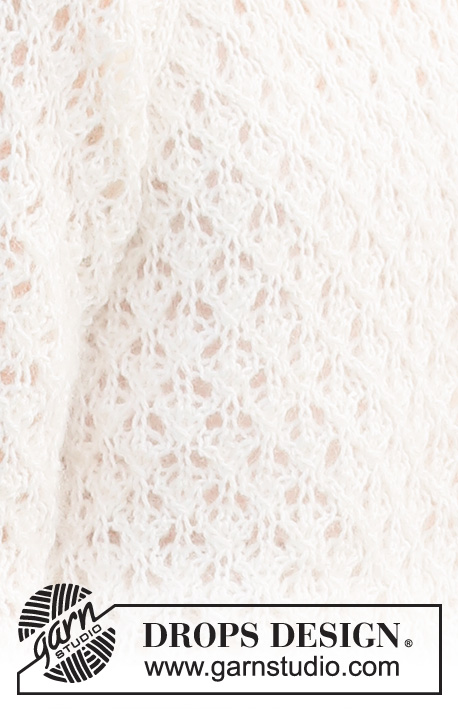


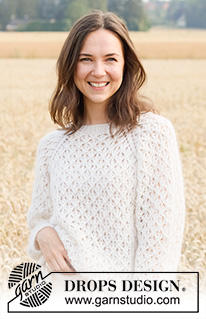
























































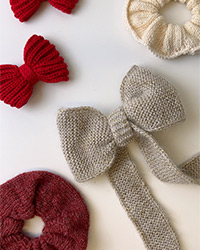
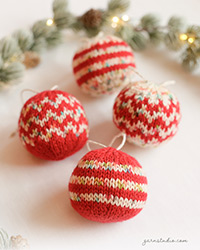

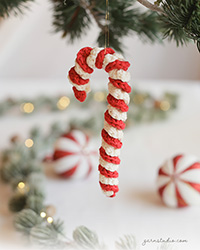

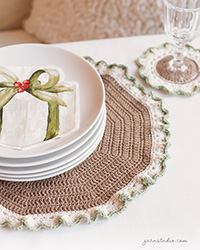
Post a comment to pattern DROPS 220-3
We would love to hear what you have to say about this pattern!
If you want to leave a question, please make sure you select the correct category in the form below, to speed up the answering process. Required fields are marked *.